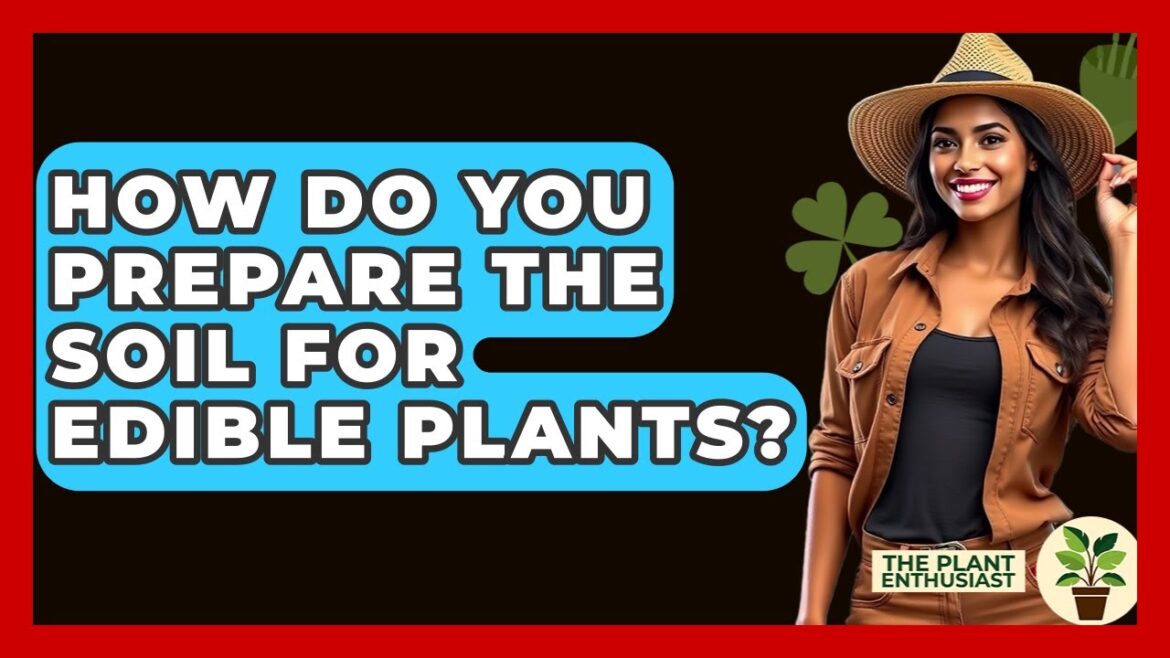How Do You Prepare The Soil For Edible Plants? In this informative video, we’ll walk you through the essential steps to prepare your soil for growing edible plants. A well-prepared soil foundation is vital for the success of your garden, and we’ll cover everything from selecting the right location to making necessary amendments. You’ll learn how to clear your planting area and the importance of conducting a soil test to understand its pH level and nutrient content. We’ll also discuss the benefits of adding organic amendments like compost and how they can enhance your soil structure and fertility.
If you’re considering container gardening, we’ll share tips on choosing the right potting soil for optimal growth. Additionally, we’ll touch on the idea of integrating edible plants with ornamental ones to create a beautiful and diverse garden space. By following these steps, you can set the stage for healthy, thriving edible plants that will contribute to a vibrant garden.
Join us for this educational journey and subscribe to our channel for more helpful tips and tricks on gardening and plant care.
⬇️ Subscribe to our channel for more valuable insights.
🔗Subscribe: https://www.youtube.com/@The-Plant-Enthusiast/?sub_confirmation=1
#EdiblePlants #SoilPreparation #GardeningTips #Compost #SoilTesting #ContainerGardening #OrganicGardening #PlantCare #GardenSoil #VegetableGardening #HerbGarden #SustainableGardening #GardenDesign #PlantHealth #UrbanGardening
About Us: Welcome to The Plant Enthusiast, your go-to destination for everything related to the wonderful world of plants! Whether you’re a seasoned gardener or just starting your green journey, our channel is dedicated to nurturing your passion for plant care, cultivation, and creativity.
How do you prepare the soil for edible plants? Have you ever wondered how to create the perfect foundation for your edible plants? Preparing the soil is a key step that can make all the difference in your garden. Let’s break down the steps to get your soil ready for those delicious vegetables and herbs. First, you need to choose the right location. Look for a spot that gets at least 6 hours of direct sunlight each day. This is essential for most edible plants to thrive. Additionally, ensure the area has good drainage to prevent water from pooling. Once you have your location, it’s time to clear the area. Remove any existing vegetation like grass or weeds. You can use a sod cutter or simply dig it out with a shovel. This step is important because you want to eliminate competition for water and nutrients. Next, conduct a soil test. This will help you understand the pH level and nutrient content of your soil. Most edible plants prefer a pH between 6 and 7. Knowing this will guide you in making the right amendments. After testing, it’s time to add organic amendments. Compost is a fantastic choice. It improves soil structure and fertility. If you have sandy soil, compost helps retain moisture and nutrients. For clay soils, it lightens the texture and improves drainage. Plus, compost introduces beneficial microorganisms that help with nutrient cycling. Mix a 2 to 3in layer of compost into the soil at least 1 month before planting. This allows the compost to break down and blend with the existing soil, creating a nutrient-rich environment for your plants. If your soil test indicates that the pH is outside the ideal range, you may need to adjust it. Use lime to raise the pH or elemental sulfur to lower it. Always follow the recommendations from your soil test to ensure safe and effective adjustments. If you are growing edible plants in containers, use highquality potting soil designed specifically for containers. This type of soil provides better drainage and irerration than regular garden soil. When planning your garden, think about how to integrate edible plants with ornamental ones. This not only adds beauty, but also creates a diverse garden ecosystem. By preparing the sole properly, you can ensure that your edible plants grow healthily and contribute to a thriving garden.

